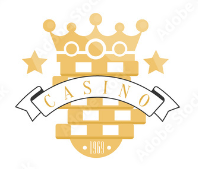Favorites are teams or athletes expected to win according to their odds, with higher probabilities of victory but greater risk associated with them.
Underdog money lines offer bettors an attractive betting alternative, as their lower chances of success and smaller payouts make them an appealing prospect.
Favorite
Favorites are considered teams which are expected to win an event or matchup based on odds, typically because of factors like star power, home field advantage or injury concerns. Favorites must cash at a higher rate than underdogs to be profitable while they may also experience backdoor covers or bad beats more frequently.
Betting on favorites typically involves laying either odds or points in a point spread, forcing you to bet more than on an underdog and forcing the favorite team to win by more points in order to cover the spread. While some bettors consider betting favorites risky, it ultimately comes down to you as the individual bettor as to how much risk they are comfortable taking on.
Underdog
Betting on underdogs in sports betting is often seen as an effective strategy; betting on them should be seen as taking risks to generate returns, with successful strategies including searching markets for profitable underdog bets and assessing them, managing bankroll wisely, avoiding over-hyped favorites and sound bankroll management practices being key elements.
Positive odds indicate that winning bets will generate profits on top of the initial $1 bet to win, and are represented with a + sign. Money lines offer greater payouts for underdog bets while being easier to win than point spread bets.
Spread
Sportsbooks often utilize artificial handicaps called Spreads as a way to level the playing field between two teams in a game. A Spread is calculated based on how much money is being bet on each side and what amount the sportsbook expects to lose on any bet, typically rounding off to within half-point; this extra number (known as “hook”) helps prevent ties from ending in draws (i.e. push).
If you bet on an underdog that wins by more than the spread, your bet will be successful. If the final score falls on or exactly within the Spread, your stake will be returned as it was the least-likely outcome; it is, however, important to monitor betting lines closely for signs of reverse line movement as this could indicate either sharp money or inside information.
Money line
Money line betting is one of the most prevalent forms of wagering. It involves placing an outright bet on which team or event will win and, with larger payouts than point spread bets. Analysis can eliminate guesswork and help make money line bets more profitable.
Odds for moneyline bets consist of two numbers; the former represents your favorite team (known as “favorites”) while the latter indicates who the underdog is (known as underdogs). The negative number indicates how much risk must be taken to win $100 in profit.
Sportsbooks will adjust odds based on how much money is placed on both sides of a bet, player injuries or lineup changes that might affect them, matchup edges that could impact moneyline bets in each sport, etc.
Parlay
Parlays combine multiple bets into one and offer higher payouts than individual bets. Parlays may involve point spreads, moneylines, over/unders and player props – each leg must win in order for there to be any payout; up to eight teams may participate and if one loses, all eight must do as well – otherwise, the entire bet is lost.
Parlays can be an excellent way to lower risk. On days when you may place multiple bets at once, using 2- and 3-bet parlays as a strategy will allow you to reduce how much of your bankroll is exposed at once. When placing parlays this way, they’re easier to calculate because their odds can simply be multiplied together like any single bet would be.
